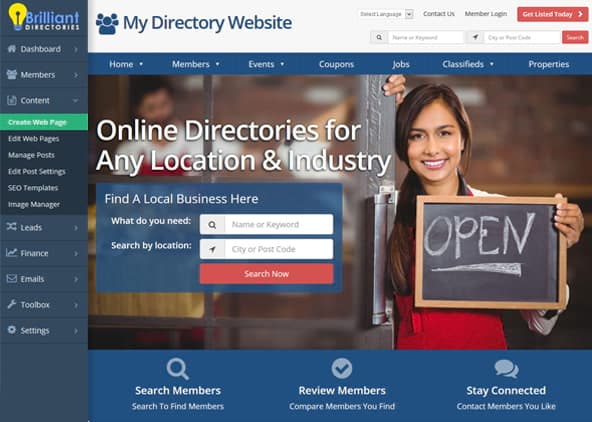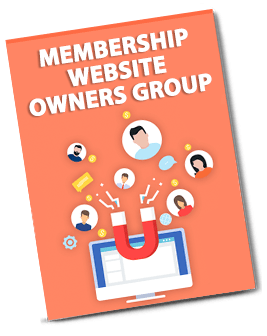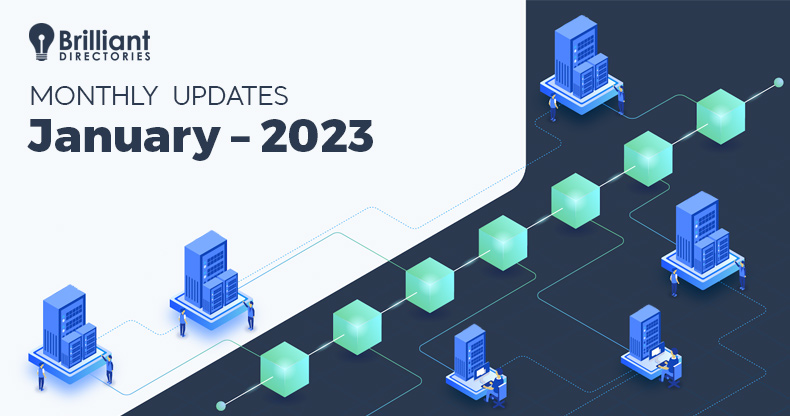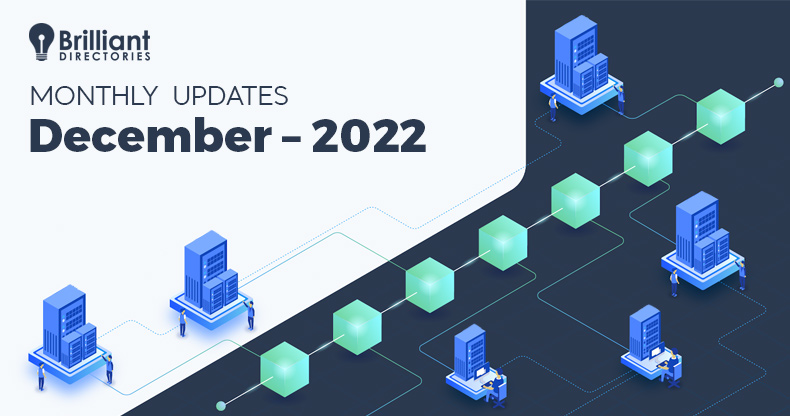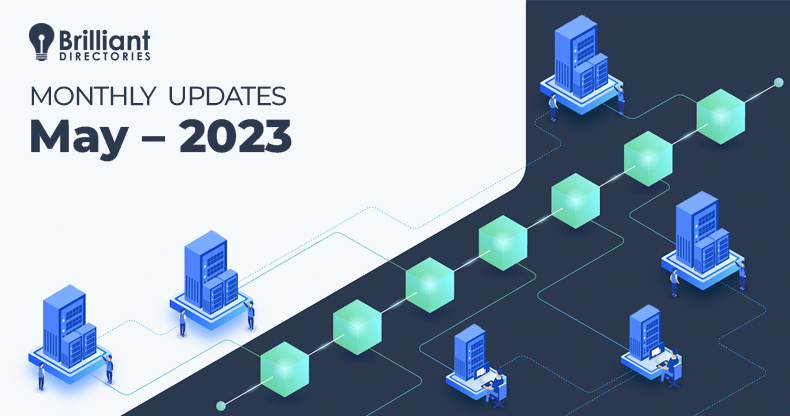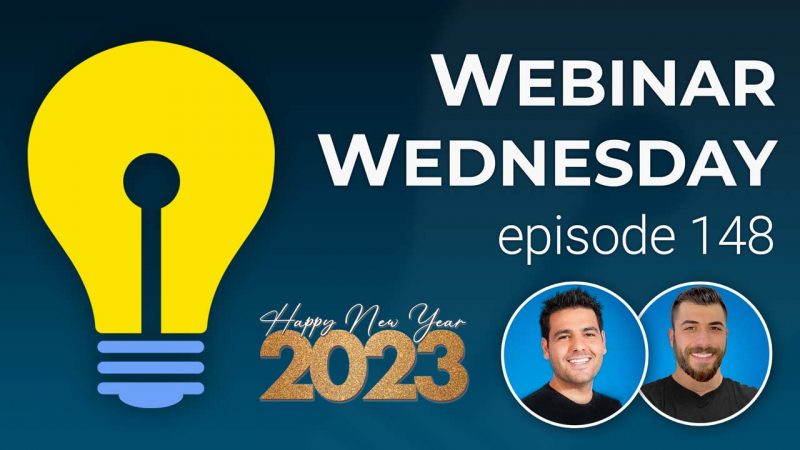
Key Topics:
- 1:58 – iPad Giveaway Winner
- 4:29 – Speed: Faster Admin + Deliver More Assets from BD’s CDN
- 5:07 – Language: Text Label Libraries for German & French
- 5:59 – API: Import Posts Such as Jobs, Articles, Events & More
- 7:06 – Coupons: Create Codes for Digital Products, Pay-Per-Post & Leads
- 8:21 – Finance: Search Transactions by Active or Ended Subscriptions
- 9:34 – Account: Delayed Account Close Date Based on Paid Subscriptions
- 10:50 – Tons More: Speed, Security & Stability Updates on the Way!
- 11:21 – Best Practices: Optimize Images to Improve Website Speed
- 12:13 – The Right Images are Game Changing
- 15:13 – Best Practices for Web Images
- 18:37 – Free Online Tools to Optimize Images
- Resize Tool: iLoveIMG
- Optimize Tool: ImageOptim Online
- Convert Tool: Convertio or CloudConvert
- 22:10 – Important to Note…
- ImageKit – 5 Ways To Rocket Boost Your Website Speed & Page Load Times
- 24:16 – Live Website Example: Before & After
- 35:44 – General website review
- 43:42 – Optimizing member profile page
- 49:49 – How to use “View Page Source” browser option
- 52:18 – Finance and coupons update anticipated release dates
- 53:03 – Use cases for importing posts
- 57:03 – Displaying events on homepage in chronological order
- 1:00:56 – Troubleshooting Google Maps API not working
- 1:04:04 – Email template to reach out to claim listings
- 1:06:15 – Options for members to embed audio files on their profiles
New Features
Tip of the Week
Questions & Answers

 AI-Generated Transcript – Please excuse any inaccuracies
AI-Generated Transcript – Please excuse any inaccuracies
iPad Giveaway Winner (00:01:58)
- A grand prize winner, Rick Nuski from South Australia, was announced as the winner of an IPad giveaway contest that took place in November, and he was congratulated on his win (00:02:09).
- The iPad giveaway contest also included other prizes such as Amazon (company) gift cards and a free lifetime website plan, and it was held in the Facebook group, which currently has close to 10,000 members (00:02:12).
- The Facebook group is a hub for discussions and activities, and new members, including Tom, Trisha, Tess, Rich, Ryan, and Sharon, were welcomed to the webinar (00:03:00).
- The webinar aims to share new features and updates with the community, and it covers topics such as increasing traffic, converting visitors into members, and improving website navigation (00:03:39).
- The team, including Cheryl and Lynn, were introduced, and the webinar’s goal is to help members grow their community by taking actionable steps, with a focus on answering questions and providing help with membership sites (00:03:11).
- Recent updates to the platform included smaller fixes and patches to stability, security, and speed, but the focus of the webinar will be on upcoming features and lab updates (00:04:08).
- The webinar will also cover the tip of the week, and the host will go through a list of updates before getting into the main topic, with the goal of helping members make the most of their membership website (00:04:25).
Speed: Faster Admin + Deliver More Assets from BD’s CDN (00:04:29)
- Speed updates are being implemented to improve the performance of all BD websites, with a focus on both the front end and back end, including the Administration area where site management takes place (00:04:30).
- The BD development team has been working on identifying and implementing updates that improve website speed, and their efforts are being recognized and appreciated (00:04:31).
- The goal is to create a faster admin area with faster saves and other improvements, in addition to delivering more assets from BD’s CDN to enhance the user experience for global users (00:04:42).
- These updates aim to enable users to work on their websites more quickly, both on the front end and the back end, resulting in improved overall performance (00:04:57).
- The development team’s efforts are expected to have a positive impact on users worldwide, allowing them to manage their sites more efficiently, with the updates building on the progress made in the previous month (00:05:05).
Language: Text Label Libraries for German & French (00:05:07)
- A language library was introduced, which allows users to translate their site into various languages, but initially required changing around 1500 text labels, a process that has been simplified (00:05:07).
- The language library currently supports English language and Spanish language, and users can translate 99% of their site into either language with the click of a button (00:05:22).
- French language and German language languages are expected to be released soon, potentially before the end of 2022, and more languages will be added based on demand and popularity over time (00:05:33).
- By the end of the year, the system aims to have four main languages available, including English, German, French, and Spanish, with more languages to be added in 2023 (00:05:52).
API: Import Posts Such as Jobs, Articles, Events & More (00:05:59)
- Integrations and using Brilliant Directories’ API with Zapier, Pabli, or other third-party solutions like ClickFunnels are being discussed, with current capabilities including importing members and leads (00:06:00).
- The ability to import posts such as job listings, blog articles, events, and more is coming soon, allowing for the direct import of RSS feeds or data from other sources through the API (00:06:16).
- The future of Brilliant Directories involves launching a new site and simplifying the process of importing members and content, such as job listings, with the goal of quickly populating a site and getting it up and running with just a few clicks (00:06:38).
- The vision for Brilliant Directories includes making it easy to add content to sites, including job listings and other posts, by utilizing available feeds to quickly populate a site and get started (00:06:54).
Coupons: Create Codes for Digital Products, Pay-Per-Post & Leads (00:07:06)
- Coupons can be used to create promotional codes that encourage member signups or upgrades with the easy coupon codes add-on, but currently, coupon codes cannot be created for one-time payments such as digital products, paper post feature, or lead purchases (00:07:06).
- The development of coupon codes for one-time payments was hindered by the user interface, but a screenshot is available to demonstrate how it will work, allowing users to choose what the promo code can be used for, including new signups, upgrades, digital products, paper posts, and lead purchases (00:07:12).
- The upcoming feature will provide checkbox options to select what the promo code can be applied to, including membership plan sign-ups, upgrades, digital products, posts, and leads, enabling site owners to offer more perks to existing members (00:07:37).
- The new coupon code feature is expected to be released around January or February 2023, and it will allow site owners to provide more targeted promotions and discounts to their members (00:07:42).
- The feature will enable site owners to specify which membership plans, digital products, and types of posts the promo code can be used for, as well as which members can use it for lead purchases, giving them more control over their promotions (00:07:59).
Finance: Search Transactions by Active or Ended Subscriptions (00:08:21)
- The finance tab displays all itemized transactions in the transaction history tab, including successful payments and refunded payments, allowing for a clear overview of financial activities (00:08:21).
- A new search setting will be added to enable searching by active or ended subscription, providing insight into monthly cycles and churn rates (00:08:32).
- This new search feature will allow users to search by billing cycle and subscription status, making it possible to identify which subscriptions are active or have ended, such as monthly subscriptions that have ended (00:09:04).
- The ability to search by subscription status will give users a better understanding of their churn rate and the financial pulse of their website, including the number of people lost and those still active (00:09:07).
- By searching for ended subscriptions, users can see how many people they lost, for example, in the previous month, and by searching for active subscriptions, they can identify which ones are still active and expected to generate recurring revenue (00:09:14).
- This new feature is expected to provide a better sense of churn and a clearer understanding of the financial situation on the website, including who is active and who has ended their subscription (00:09:27).
Account: Delayed Account Close Date Based on Paid Subscriptions (00:09:34)
- Members currently have the ability to close their accounts instantly through their member dashboard, but there are plans to update the user interface to provide additional options for account closure, particularly for those with paid subscriptions (00:09:35).
- When a member with a paid subscription attempts to close their account, they will be given two options: to close the account immediately or to close it at the end of the paid period, for example, if they have already paid through December 15th (00:10:06).
- The updated account closure options are intended to address suggestions from the Facebook group, where members requested more flexibility in closing their accounts when they have already paid for a certain period (00:09:50).
- In addition to the account closure updates, there are also plans to tackle prorated upgrades and downgrades, which is expected to be implemented at the beginning of 2023 (00:10:32).
- The goal of these updates is to provide a more seamless experience for members who are closing their accounts or changing their plans, and updates on these changes will be shared as they become available (00:10:45).
Tons More: Speed, Security & Stability Updates on the Way! (00:10:50)
- Speed, security, and stability updates are planned for the platform, with numerous improvements on the way (00:10:50).
- The community’s support, including support tickets, Facebook group discussions, and feedback, is helping to make the platform better for everyone (00:10:58).
- The platform’s development is driven by the goal of providing a good experience for all users, and it is expected that all requested features will be implemented in due time (00:11:08).
- The community, referred to as the BD Community, is appreciated for their contributions, including their complaints and issues, which are used to improve the platform (00:11:13).
- A thank you message is extended to the community for their support and participation in shaping the platform’s development (00:11:18).
Best Practices: Optimize Images to Improve Website Speed (00:11:21)
- Optimizing images is a crucial best practice to improve website speed, as images play a huge role in the user experience on any website, affecting load times, SEO, and other factors (00:11:23).
- The selection of images used on a website requires careful consideration, not only for the visual experience of the member but also in terms of image file sizes and dimensions (00:11:31).
- The goal is to provide a good user experience while also keeping in mind the technical aspects of image usage, such as load times and SEO, which can be achieved by following simple yet useful tips (00:11:37).
- When building or updating a website, it is essential to keep image optimization in mind, considering factors such as image file sizes and dimensions to ensure a smooth user experience (00:11:49).
- Image optimization is a simple yet important aspect of website development, and being aware of its impact on website speed and user experience can help website owners make informed decisions when adding images to their website (00:11:59).
The Right Images are Game Changing (00:12:13)
- High-quality images are important for any website experience, especially those that relate well to the target audience and content, as they can draw attention and elicit emotions in visitors (00:12:15).
- Using high-quality images, such as background images and hero images on the home page, can create an atmosphere and set the stage for the website visitor’s experience, giving them an idea of what the website is about (00:12:21).
- However, many sites use images that are too large for their purpose, which can affect page load times and lead to a poor user experience, even if the images are of high quality (00:13:15).
- Optimizing images by reducing their file size and dimensions can improve page load times, which is important for search engine optimization (SEO), as search engines favor websites that serve content rapidly (00:13:57).
- High-quality images do not necessarily mean large image sizes, but rather attractive images with sharp photography that are clean and easy to digest, eliciting an emotional reaction or providing navigation cues for the website (00:14:33).
- Using high-quality images that are sharp, clear, and add to the website experience can help with navigation and elicit emotions in visitors, which is important for creating a positive user experience (00:15:03).
Best Practices for Web Images (00:15:13)
- High-quality images used on websites should not be overly large in terms of dimension and file size, as large images can lead to slow load times, and recommended dimensions and target file sizes can help mitigate this issue (00:15:13).
- For images that take up the entire width of a website, such as a hero image on a home page, a width dimension of about 2000 pixels and a file size of no larger than 200 kilobytes are recommended (00:15:34).
- For content images, which are placed in the body of a post or as a supporting image on a web page, a width of no more than 1200 pixels and a file size below 100 kilobytes are suggested (00:16:09).
- Square sidebar images, which are typically 450-500 pixels in length and height, should have a file size of no more than 50 kilobytes (00:16:48).
- To optimize image file sizes, it is possible to use free online tools and edit photos without specialized software, and choosing the right size of images from stock photo websites can also help solve problems with image file sizes (00:17:25).
- Many stock photo websites charge more for larger-sized images, but for web use, images with dimensions of around 2000 pixels are often sufficient, and downloading images of the right size can help reduce file size issues (00:17:40).
Free Online Tools to Optimize Images (00:18:37)
- There are free online tools available to optimize images used on websites, including a tool to resize photos, which is particularly useful for images from stock photo sites that often have extremely large dimensions, several thousand pixels in either direction (00:18:41).
- An optimization tool, such as imageoptim.com, can be used to reduce the file size of an image without reducing its dimensions, by removing bloat metadata and optionally reducing the image quality (00:19:11).
- The optimization tool can reduce the file size of an image, which in turn reduces the storage space required for the image file and can help improve website load times (00:19:24).
- There are different file types for images, including JPEG, PNG, and the newer WebP file type, which was spearheaded by Google and dramatically reduces file size without losing quality (00:20:10).
- WebP files can be created by converting JPEG or PNG files using free online tools such as convertio or Cloud Convert, which can result in file size reductions of up to 75% (00:20:35).
- Using these free online tools can help optimize images and improve website load times, even for novice users who do not have access to high-level image editing software like Adobe Photoshop or Adobe Illustrator (00:21:38).
- Optimizing images can help improve website speeds and is particularly important for users who want to improve their website’s speed scores (00:21:25).
Important to Note… (00:22:10)
Live Website Example: Before & After (00:24:16)
- A live website example is being used to demonstrate the impact of overly large images on a website’s speed, with the site’s home page having four images, including a hero background image and three other images, and the speed score for the site is 63 and 86 on GT metrics, with images contributing to about seven megabytes of load time (00:24:18).
- The website’s performance is being analyzed, and it is found that the four images on the home page are contributing to 35 percent of the memory or file size of the page, with the goal of having a web page load time of under one megabyte or 500 kilobytes (00:24:56).
- The background image of the website is being examined, and it is found to be eight megabytes in size, which is too big for the space it is being used in, so it is being resized using a tool from iloveimage.com to bring it down to a more manageable size (00:25:57).
- The resized image is then being further optimized using a tool from imageopt.im, which removes metadata from the image and reduces its file size, with the option to choose the quality of the optimized image as low, medium, or high (00:26:58).
- The optimization process results in the image being reduced from eight megabytes to one megabyte after resizing, and then further reduced to 207 kilobytes after optimization, resulting in an 80 percent savings in file size (00:27:55).
- The process of optimizing an image for a website involves reducing its file size, with the goal of improving page load times, and this can be achieved by resizing the image to a more suitable dimension, such as 2000 pixels, and removing unnecessary metadata, which can reduce the file size from 8 megabytes to 207 kilobytes (00:28:09).
- Converting the image to a WebP format can further reduce the file size, with tools like Convertio or Cloud Convert available for this purpose, although they may have limits on the number of conversions that can be performed per day, and this step can reduce the file size from 207 kilobytes to 61 kilobytes (00:28:15).
- The optimized image can then be uploaded to the website’s media manager, and its impact on page load times can be tested using tools like GTmetrix.com, which provides a score based on the page’s performance, and the results can be compared to the original image to see the improvement, with the optimized image resulting in a faster load time and a higher performance score (00:29:20).
- The difference in image quality between the original and optimized images may be noticeable, but it is not significant, and the benefits of optimizing the image, including faster page load times and improved performance scores, outweigh any potential drawbacks, and the process of optimizing images can be repeated for other images on the website to further improve its overall performance (00:30:27).
- The fully loaded time for the webpage can be significantly reduced by optimizing the images, from 7.35 megabytes to 895 kilobytes, which can improve the user experience, especially on mobile devices, where slower internet speeds can make a big difference, and the page load time can be reduced to 1.3 seconds (00:31:30).
- The process of optimizing images is an important part of building and maintaining a website, as it can have a significant impact on the user experience and the website’s overall performance, and it is something that should be considered when creating and uploading content to the website (00:29:35).
- Optimizing large images is important for website performance, and file size is a key factor to consider, with dimensions being helpful in achieving a good file size, and background images should be 50 to 200 kilobytes (00:31:58).
- To check image file sizes, the media manager can be used, which shows the size of images, and large file sizes, such as 8 megabytes, can be a red flag, while smaller sizes, like 62 kilobytes, are more acceptable (00:32:09).
- Image kit can be used to further improve load times, and it can be set up by creating an account, then pasting the link for optimized images in the advanced settings, which enhances image delivery (00:32:53).
- Converting PNG and JPEG images to WebP format can also improve website speed, and tools like convertto.converdio.co and convertcloud.com can be used for this purpose (00:33:50).
- Using image kit and optimizing images can significantly improve website speed, with a score of 100 being achievable, and anything in the high 80s or 90s is a good sign that the website does not have major speed issues (00:34:24).
- Being aware of image sizes is a good best practice, especially for non-web designers who manage their own websites, and it is important to keep this in mind to ensure good website performance (00:34:53).
- Teresa’s website was suspended by Google, but she was able to research and resolve the issue, and get her site back up and running, and is now seeking further assistance (00:35:27).
General website review (00:35:44)
- The website notarytoday.pro was reviewed, and the reason for its de-indexing was discussed, with the site owner having to provide copies of their lease and business registration to resolve the issue (00:35:44).
- The site’s use of Circle social login buttons was noted, but it was mentioned that these buttons don’t work well in certain situations, and this issue is something that needs to be fixed by the developers (00:36:30).
- From an SEO perspective, the site looks great, with suggestions made to improve the main menu items by making them all one line to reduce height and make the layout more uniform (00:36:48).
- The site’s SEO keywords, such as “notary public professionals Network” and “directory”, were discussed, with recommendations to use words like “local” to improve search engine optimization (00:36:51).
- The main menu items were reviewed, with suggestions to make them all one line to improve the site’s layout and reduce the height of the menu (00:37:06).
- The site’s calls to action, such as “join now” and “become a notary”, were discussed, with recommendations to clarify the difference between these two actions to avoid confusion (00:38:32).
- The site’s home page was reviewed, with suggestions to center the alignment and personalize the call to action to make it more appealing to visitors (00:38:20).
- The site’s welcome message was discussed, with a suggestion to change it to “welcome to notary today” to make it more specific and clear (00:39:27).
- The site’s focus on helping notaries and providing a community for them was noted, with the site owner having received positive feedback from the notary community and having hosted a successful conference (00:38:01).
- The website in question appears to be a B2B platform designed to help notaries, and it also allows consumers to find notaries, with features such as upcoming notary events and a notary directory, which can be optimized with relevant keywords (00:39:45).
- The use of long-tail keywords, such as “upcoming notary events” and “notary directory”, can help improve the website’s search engine optimization, and the website already has a good structure with sections like “Spotlight notary” that showcases specific members (00:39:56).
- The “Spotlight notary” section is a great way to highlight a specific member, and it is likely to be shared by the featured member on their social media, which can help drive traffic to the website (00:40:28).
- The website can be further improved by using more specific keywords, such as “notary public”, and by providing more context for sections like “newest members”, which could include information about the members’ professions or specialties (00:41:02).
- There is a discussion about how to limit the display of members in the “newest members” section, and it is suggested that this could be done by creating a separate membership plan for notaries or by hand-selecting members, but a more dynamic solution would be to filter by category (00:41:31).
- The website’s home page is considered to be 90% complete, but it needs a bit more uniformity and focus, and the internal pages should also be reviewed to ensure they make sense and are easy to navigate (00:42:47).
- The conversation then shifts to Colette, who has a question about page speed, and it is mentioned that optimizing images and other elements can help improve page speed (00:43:38).
Optimizing member profile page (00:43:42)
- The profile page has several elements loading, including an events map that is being optimized, and it is recommended to remove the events map from the member’s profile page sidebar and replace it with a link to check out upcoming events (00:44:10).
- The page speed is being checked using GT metrics, which provides a waterfall breakdown of the page’s loading time and identifies the main contributors to the page’s load time, with JavaScript being the main contributor (00:44:40).
- An ad on the page is causing a delay in loading and is pushing everything down after it loads, resulting in a cumulative layout shift, and it is recommended to set a width and height for the outer div to prevent this issue (00:45:10).
- The events calendar and Facebook feed are being removed from the sidebar to see if it improves the page’s loading time, and the member Facebook feed can be removed as it is not necessary (00:46:14).
- The share this tool is also taking up a lot of resources and may be affecting the page’s loading time, and it is recommended to optimize the loading of this tool (00:46:52).
- The page is being re-checked using GT metrics and Google page speed to identify the culprit behind the page’s slow loading time, which is either the ad plug or something related to it (00:47:40).
- The performance of a website has improved after removing the events calendar, with scores jumping from 46 and 88 to 85 and 90, and the JavaScript loading time has decreased from 5 to 580, although this change is not significant (00:48:17).
- To optimize the loading of share buttons, lazy loading can be used, which means the buttons are loaded only when needed, rather than loading immediately when the page is opened, and this method can be shared in the Facebook group (00:48:48).
- A website’s optimization settings have been reviewed, and everything looks good, with a goal to achieve scores of 90 plus, and Colette has been thanked for her input (00:49:02).
- Graham, who is calling from Canada, specifically from the Yukon, has been unmuted and is now able to communicate, and there is a discussion about using the source code option when right-clicking on a page to view the source code (00:49:26).
- The use of the source code option has been acknowledged, and there is a mention of a potential webinar, although the details of the webinar are not specified (00:49:45).
How to use “View Page Source” browser option (00:49:49)
- The “View Page Source” browser option can be used to optimize the design of websites and is accessible by right-clicking and selecting “view source code” or by using the keyboard shortcut “control U” (00:50:02).
- Every public web page has source code that the browser reads to print the page, and this feature can be used to quickly view meta titles and descriptions for SEO, as well as social media metadata (00:50:20).
- The “View Page Source” option is mainly used for troubleshooting or doing a quick check, such as searching for a specific element on the page, like a JavaScript that may be loaded multiple times, by using the “control F” function (00:50:40).
- The source code can be used to check if social fields are filled out, view the title, description, and keywords, or find specific elements on the page that may not be visible in the user-friendly version (00:51:12).
- The “View Page Source” option is not an extra tool, but rather a built-in feature that can be used for troubleshooting or quick checks, and every page has this feature, including the GT metrics website (00:51:31).
- The source code can be accessed by going to any website, such as the GT metrics website, and selecting “view page source” to view the underlying code, although it may not be useful for extracting or scraping information due to copyright restrictions (00:51:44).
Finance and coupons update anticipated release dates (00:52:18)
- The upcoming features, such as closing account and coupon codes, are expected to be released in the new year, with some features potentially being released as early as January or February (00:52:18).
- The delayed feature and coupon codes are among the upcoming features that are highly anticipated, and members with paid subscriptions are expected to benefit from these new features (00:52:20).
- The release dates for these features are not set in stone, with some features potentially being released towards the end of the year and others in January or February, but they are currently on the radar (00:52:32).
- These upcoming features have been popular topics in the Facebook group and support tickets, indicating a high level of interest among members (00:52:41).
- The events listing on the site and other features have also been subject to questions and inquiries, highlighting the need for updates and improvements (00:52:58).
Use cases for importing posts (00:53:03)
- Importing posts can be useful for automatically populating a site with events from other sources, such as Eventbrite or Google events, using their RSS or XML feeds to extract title, date, description, and feature photos, and this can be done dynamically over time (00:53:03).
- Google does not like duplicate content on the internet, but this issue can be addressed by setting the imported pages to no index, which means they will not rank in search results, but will still be available to visitors searching the site (00:54:00).
- There are ways to add unique content to the imported pages, even if they are pulled from a feed, and this can provide great value to visitors, making the site an immense resource for the industry (00:54:13).
- Importing posts can also be used to feed content from a blog or other source into a Brilliant Directories site, especially when migrating from another platform like WordPress, and this can be done using the Brilliant Directories API or through Zapier (00:54:30).
- The API import does not require Zapier, and developers can use the API to import content, while novice users can use Zapier for a point-and-click experience, and the API is free to use (00:55:17).
- When importing events from an RSS feed, the events will automatically update on the site as the source updates, and old events will drop off based on their listing, with the option to set filters and conditional statements to control which events are imported (00:56:00).
- The site can be set up to only show upcoming events, with the option to make expired events searchable as well, and filters can be set to skip events with end dates that are less than the current date (00:56:31).
Displaying events on homepage in chronological order (00:57:03)
- The events on the website are not in chronological order on the events page, but they appear in the correct order when viewed on the home page or when clicking “view all”, which is controlled by a specific setting (00:57:04).
- There is a dedicated page for events, and when hovering over the events, it is noticed that the events are not in chronological order, with the first event being on March 7th and the second event being in January (00:58:06).
- The events are auto-populated, but the ones that are manually posted are in the correct order, and the issue seems to be with the auto-populated events (00:58:09).
- When switching the settings to “start date earliest”, the events widget disappears, which is a technical issue that needs to be reported to the support team (00:59:38).
- The correct setting to display the events in chronological order is “start date earliest”, and the support team should be informed that the widget disappears when this setting is selected (01:00:05).
- The issue seems to be a small technical problem that can be fixed by reporting it to the support team, and the events should be displayed in the correct order once the issue is resolved (01:00:25).
Troubleshooting Google Maps API not working (01:00:56)
- The issue with Google Maps not working on the website desicconnect.ca is being troubleshooted, and the first step is to check the Google Maps API status in the dashboard, which shows that it is working, but the maps are not displaying (01:01:07).
- The website is about five years old and has claim listings that were imported, and the members have been geocoded with longitude and latitude, with 1800 members and only 40 having issues (01:02:07).
- To fix the issue, the domain name desicconnect.ca needs to be added to the Google Maps API, which can be done by going to the Google Maps API website, clicking on “Get started”, and then adding the domain name to the credentials (01:02:10).
- The process involves going to the Google Maps platform, clicking on “Get started, and then navigating to the “Credentials” section, where the domain name can be added, and the key can be restricted or unrestricted (01:02:45).
- Once the domain name is added, the Google Maps should start working immediately, and if issues persist, the support team can be emailed or the Facebook group can be contacted for further assistance (01:03:41).
- Additional troubleshooting steps can be taken, such as checking the API key and ensuring that it is not restricted, and if the issue is still not resolved, a second question can be asked or further assistance can be sought (01:03:56).
Email template to reach out to claim listings (01:04:04)
- There is an email template available to claim listings, which can be used to make businesses aware that they have a listing and invite them to update their information to receive leads from the page (01:04:04).
- The email template is available in a blog post and can also be shared in the Facebook group for those who are interested, and it essentially says that the business has been added to a directory and is invited to update their information (01:04:28).
- The template is a nice email that informs businesses about their listing and allows them to update their information to receive leads, and it can be shared with those who ask for it in the Facebook group (01:04:53).
- A user, Robert, mentions that he ran a test using GT metrics and his site scored 88 and 90, which he is happy with, but he has a question about the test server location being in Vancouver, Canada (01:05:37).
- It is explained that the test server location is not a concern if the majority of the users are in the Americas, as the test is still relevant and useful for measuring site performance (01:06:02).
- Robert had a question and was waiting for an answer, and another user, Jason, is mentioned as being part of the conversation and helping to address questions and concerns (01:05:21).
- The conversation also mentions another user, Selva, who had a question about a Google Maps issue, which is said to be an easy fix (01:05:12).
- The email template is available for those who need it, and users can ask for it in the Facebook group or check the blog post for more information (01:04:24).
Options for members to embed audio files on their profiles (01:06:15)
- The discussion revolves around optimizing website images and media management, with a specific issue related to a widget for The Voice demos on the website voicerim.com, which has a picture at the top and three image players below, (01:06:15).
- The image players are actually just image links that take visitors to a separate page when clicked, and it seems to load faster this way, (01:07:04).
- The files linked to these images are hosted on a different platform, ning.com, which was previously used, and there is a concern about whether these files will remain accessible, (01:08:02).
- The goal is to allow visitors to hear a snippet of a person’s sound, and it is recommended to provide a how-to video on five audio solutions that members can use to add their files to the site, (01:08:17).
- A tool called Embedly can be used to empower members to embed content from various sources, including audio from platforms like SoundCloud, Spotify, and Last.fm, (01:09:09).
- Embedly specializes in embedding video or audio from different platform sources, and members can use it to embed content in the text editor, with a list of supported platforms available to be shared on a how-to page, (01:09:25).
- Providing a list of the top five audio solutions and creating a how-to video can help members solve the problem themselves and add their files to the site, (01:09:50).
- The top five recommended solutions for supporting audio inserts or embeds are available, and users can choose from these options to upload their own audio, with instructional videos provided for guidance (01:10:10).
- It is recommended that voice-over artists have their demos on popular websites, such as YouTube, Vimeo, or other video platforms, to make it easy for them to share their audio content (01:11:00).
- To make it easy for users to upload their audio, it is suggested to support a few popular websites and encourage them to share their YouTube videos instead of trying to figure out multiple ways to get the audio (01:11:25).
- Compelling users to use the website and providing a few “how-to’s” can help them get started, and making it easy for them to contact support can prevent them from abandoning their profiles (01:11:50).
- Optimizing images to improve website speeds is crucial, and it is recommended not to upload high-file-size images to reduce file sizes and improve performance (01:12:37).
- The webinar will have a replay available in the Facebook group, and users can join the group by going to brilliantdirectories.com/forward slash Facebook, where the host will be more active in the coming weeks (01:13:00).
- The next webinar will be in two weeks, and users can catch up on previous webinars by subscribing to the YouTube channel at brilliantdirectories.com/forward slash YouTube (01:13:20).

